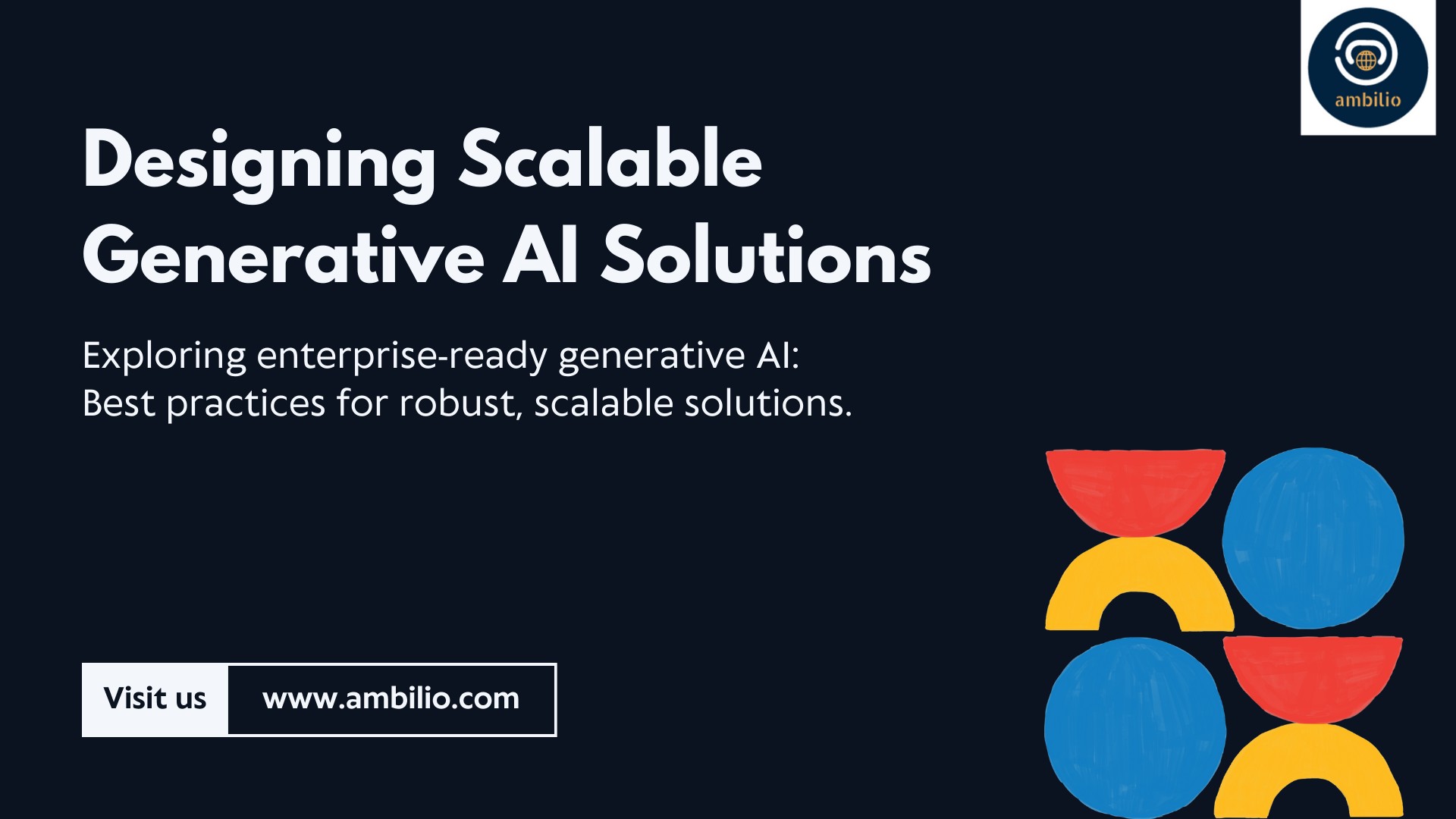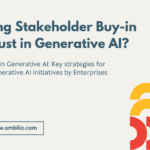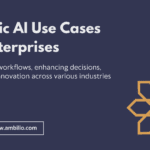Scalable Generative AI has revolutionized the tech industry, creating diverse content from text to images and music. As its popularity soars, ensuring these AI systems can meet growing demands becomes crucial. This article delves into strategies for building Scalable Generative AI solutions that can expand and adapt seamlessly. We’ll examine real-world examples and break down complex concepts into simple terms, providing insights into the development of robust, flexible AI systems capable of handling increased usage while maintaining performance and reliability.
Choosing the Right Foundation: Model Architecture
The first step in building a scalable generative AI system is picking the right model architecture. Think of this as choosing the right blueprint for a house. You want a design that can easily add more rooms as your family grows.
A great example of this is OpenAI’s GPT (Generative Pre-trained Transformer) models. They started with GPT-2, which was impressive on its own. But because they chose a flexible design, they could scale it up to create GPT-3, which is much more powerful. It’s like they built a house that could easily turn into a skyscraper.
The transformer architecture they used is like a super-flexible building material. It works well for many different tasks, from writing stories to answering questions. This flexibility means the same basic design can be used for lots of different applications, making it easier to scale up.
When you’re choosing a model architecture, consider:
- What tasks you want it to do
- How much data you’ll be working with
- How fast it needs to respond
- What kind of computers you’ll be using
Feeding the Beast: Efficient Data Pipelines
Even the best AI model is only as good as the data it learns from. As your AI system grows, you’ll need to handle more and more data. This is where efficient data pipelines come in.
Google’s BERT model is a great example of this. BERT helps Google understand what people are searching for. To make BERT work well, Google needs to feed it massive amounts of text from the internet. They built special systems to collect, clean, and prepare all this data efficiently.
Think of a data pipeline like a huge kitchen in a busy restaurant. You need a system that can handle ingredients coming in, prep them quickly, and get them ready for the chefs (in this case, the AI models) to use. As your restaurant gets busier, you need to be able to handle more ingredients without slowing down or making mistakes.
Key points for building good data pipelines:
- Make them flexible so they can handle different types of data
- Include steps to check the quality of the data
- Use systems that can store huge amounts of data cheaply
- Have ways to quickly access data that’s used often
Power to Grow: Cloud and Distributed Computing
As your AI system becomes more popular, you’ll need more computing power. This is where cloud computing comes in handy. It’s like having a magical computer that can grow or shrink based on what you need.
Stability AI, the company behind the Stable Diffusion image generation model, uses cloud computing to serve millions of users. When lots of people are using their AI to create images, they can quickly add more computing power. When fewer people are using it, they can scale back, saving money.
Using cloud computing for your AI is like having a rubber band instead of a piece of string. It can stretch when you need more power and shrink when you don’t. This flexibility is crucial for handling the ups and downs of user demand.
Benefits of cloud computing for AI:
- Easily add more power when you need it
- Pay only for what you use
- Access to specialized hardware like powerful graphics cards
- Tools to manage and monitor your system
Speed Matters: Optimizing Performance
As your AI system grows, making it run faster becomes very important. If it’s too slow, people won’t want to use it, no matter how clever it is.
Meta (formerly Facebook) faced this challenge with their BlenderBot chatbot. They wanted to use it for millions of conversations, but the original version was too slow and bulky. So they used special techniques to create a smaller, faster version that still worked well.
This is like taking a big, powerful car engine and figuring out how to make it smaller and more fuel-efficient without losing too much power. It allows you to use the AI in more places and serve more people with the same amount of computing resources.
Techniques for optimizing AI performance:
- Quantization: Using smaller numbers to represent the AI’s “thoughts”
- Pruning: Removing parts of the AI that aren’t very important
- Distillation: Creating a smaller AI that learns from the bigger one
- Using specialized hardware like TPUs or FPGAs
Building Blocks: Modularity and Extensibility
When designing a scalable generative AI system, it’s important to make it modular. This means building it in separate pieces that work together, rather than one big, complicated system.
Hugging Face, a company that provides AI tools, does this really well. They’ve created a system where different parts of the AI process – like understanding the input, generating the output, and training the model – are all separate. This makes it easy for developers to experiment with new ideas and improve specific parts without changing everything.
Think of it like building with LEGO blocks instead of carving a statue. If you want to change part of a LEGO creation, you can easily swap out some blocks. With a statue, you’d have to start all over.
Benefits of modular AI design:
- Easier to update and improve specific parts
- Can reuse components for different projects
- Simpler to understand and manage the system
- Allows different teams to work on different parts
Keeping Watch: Monitoring and Logging
As your AI system grows, it becomes more important to keep a close eye on how it’s doing. This is where monitoring and logging come in.
Amazon’s Alexa voice assistant is a good example. Alexa handles billions of requests every day. To make sure everything runs smoothly, Amazon has built sophisticated systems to watch for problems. They track things like how fast Alexa responds, how often it understands correctly, and how much computing power it’s using.
This is like having a team of doctors constantly checking the vital signs of a patient. By watching closely, they can spot problems early and fix them before they become serious.
Key aspects of good AI monitoring:
- Track important metrics like speed and accuracy
- Set up alerts for when things go wrong
- Keep detailed logs to help figure out what happened if there’s a problem
- Use AI to spot unusual patterns that might indicate issues
Keeping Up with Change: Model Versioning and Updates
AI models are constantly improving. Managing these updates in a live system can be tricky. You want to take advantage of improvements, but you don’t want to break things that are already working well.
OpenAI’s approach with GPT-3 is interesting. Instead of constantly updating the main model, they allow developers to “fine-tune” it for specific tasks. This is like having a basic car model that dealerships can customize for different customers, rather than changing the factory design every week.
Strategies for managing AI model updates:
- Use version control to keep track of different model versions
- Test new versions thoroughly before using them live
- Have a way to quickly switch back to an older version if there are problems
- Consider using techniques like continual learning to gradually update models
Doing the Right Thing: Ethical and Responsible AI
As AI systems become more powerful and widely used, it’s crucial to make sure they behave ethically and responsibly. This becomes even more important as the system scales up and affects more people.
Microsoft faced this challenge when they integrated ChatGPT into their Bing search engine. As more people used it, they discovered it sometimes gave biased or inappropriate responses. Microsoft had to quickly improve their safety measures to address these issues.
This is like building safety features into a car. As cars got faster and more people started driving, we needed to add things like seatbelts, airbags, and crumple zones. Similarly, as AI systems grow, we need to build in safeguards to prevent harm.
Important considerations for ethical AI:
- Regularly test for bias and unfairness
- Have clear guidelines for what the AI should and shouldn’t do
- Build in safeguards to prevent misuse
- Be transparent about the AI’s capabilities and limitations
Counting the Cost: Optimizing for Efficiency
Running large AI systems can be expensive. As you scale up, it’s important to find ways to keep costs under control.
Google’s use of BERT for search queries is a good example of balancing cost and benefit. Applying BERT to every search query would be very expensive. So Google carefully optimized the model and how they use it. This allowed them to improve search results without making the cost too high.
This is like finding ways to make a car more fuel-efficient. You want to go fast and far, but you also need to keep an eye on how much gas you’re using.
Strategies for cost-efficient AI:
- Optimize the model to use less computing power
- Use techniques like caching to avoid repeating work
- Take advantage of cheaper computing resources when possible
- Carefully measure the benefit of AI improvements against their cost
Final Words
Building scalable generative AI systems is a complex challenge, but it’s crucial for the future of AI technology. By focusing on flexible architectures, efficient data handling, smart use of computing resources, and responsible development practices, we can create AI systems that can grow to meet increasing demands.
Remember, scalability isn’t just about handling more data or users. It’s about creating systems that can adapt to new challenges, improve over time, and continue to provide value as they grow. By following these best practices and learning from real-world examples, we can build AI systems that are not just powerful, but also sustainable and responsible.
As we continue to push the boundaries of what’s possible with generative AI, keeping scalability in mind will be key to turning today’s exciting prototypes into tomorrow’s indispensable tools.



